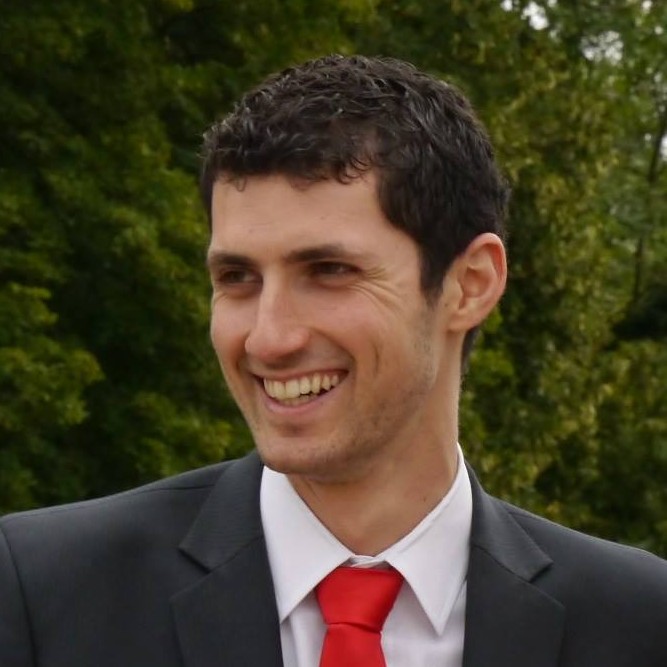Biological Chemistry

Team composition
Team Leaders
Thematic Groups
Metabolism, Pharmaco-
chemistry and Neurochemistry
R. Alves de Sousa, IR
C. Laurent, AI
E. Gonis, Post-Doc
D. Mansuy, DRem
N. Mathas, AI
I. McCort, CR, HDR
A. Mikou, CR
G. Poncet, Ph.D.
B. Ramassamy, ADT
M.A. Sari, PR

D. Padovani, CR, HDR
E. Galardon, CR, HDR
S. Lajnef, IE
D. Over, MCU, HC
F. Peyrot, PU, HDR
M. Poinsot, IE
G. Force, Post-Doc
Immunology and Biochemistry
in Rare Inflammatory Diseases

A. Mellet, MCU
C. Gitiaux, PU-PH
M. Poisot, IE
S. Guermah, ADT
T. Moreau, Ph.D
C. Cescato, Ph.D
D. Bletry, Ph.D
Targeting and Bioortohogonal Chemistry

The team BIOLOGICAL CHEMISTRY is a multidisciplinary team composed of chemists, biochemists and immunologist who share common strategies related to protein chemistry and reactivity. Its activity involves chemical synthesis, protein chemistry, redox (bio)chemistry, molecular modelling, metabolism, studies on the reactivity and biological functions of metabolites or effector molecules and their impact on cellular function. The team is organized into 4 interconnected thematic groups with shared technical support staff members.
Metabolism, Pharmacochemistry and Neurochemistry
The work of this group focuses on decrypting the reaction mechanisms of several proteins involved in metabolism (Cytochromes P450 and Paraoxonase-1), protein and nucleic glycation repair (DJ-1/PARK7), regulation of various central nervous system (CNS) receptors (metabotropic glutamate receptors – mGluRs) or amino acid transporters, and formation of gaseous signaling molecules (nitric oxide, NO). In addition, the work of this group consists in deciphering the intrinsic molecular properties, signaling functions, metabolism and/or toxicological effects of small molecular compounds (NO, anti-thrombotic drugs, peptides such as hepcidin, metabolites from the Kynurenine Pathway, specific regulators of mGlu 2, 4 receptors).
Biochemistry Redox
The work of this group focuses on the vast network of redox-based effector signals that regulate critical biological functions and participate in both our health and many diseases. As such, we are involved in the study of the homeostasis of sulfur-containing signaling species (hydrogen sulfide H2S, per- or poly-sulfides R-S-(S)n-H), in the deciphering of their intrinsic molecular properties (use of reliable chemical tools, such as disulfanido metal complexes or garlic-derived organosulfur compounds, and selection of suitable models to decrypt their mechanisms of action), and the decoding of their signaling functions under physiological or pathological conditions (at the molecular, cellular and animal levels). In addition, we are also interested in the development of dedicated molecular probes to carry out these researches, such as redox probes for the determination of the redox tone by electron paramagnetic resonance and specific fluorescent probes.
IBRID: Immunology and Biochemistry for Rare Inflammatory Diseases
This team is interested in the identification of pathological mechanisms in inflammatory and autoimmune diseases associated with loss of control of two immune pathways: The type I interferon pathway and the NLRP3 inflammasome pathway. Our projects, conducted in close collaboration with several clinical departments aim to foster the identification of reliable marker for diagnosis or response to treatment as well as the identification and biological evaluation of new treatment strategies.
TBC: Targeting & Bioorthogonal Chemistry
This group focuses on research themes at the interface of organic chemistry, chemical biology and nanomedicine, offering a unique integration of approaches bas on bioorthogonal chemistry enabling new, reliable, controlled and modular methods for generating biologically interesting objects. Although the main current applications are in cancer therapeutics, the group’s ambition is to prepare diagnostic, therapeutic and research tools that are more widely useful to the scientific community.

